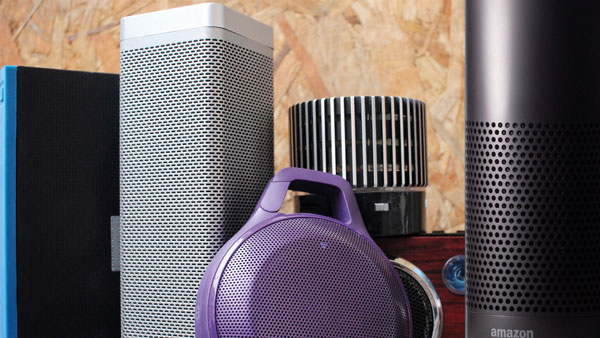The global media measurement community gathered across three days in Prague last week at the annual ASI Radio & Audio and TV & Video conferences – not so much a twin event but rather a summit taking in two sides of what is, increasingly, a single coin. The focus transitions from audio to video at around tea time on day one, reflecting the fact that most advertisers, most agencies and some media owners see an imperative to measure audiences and ad campaigns across all media. A handful of media owners focus only on audio or video alone, but most delegates recognise value in exploring the world of audio and video together. UKOM CEO Ian Dowds was there. Here are his key takeaways –
The sonic boom
It can seem these days as if the world is obsessed with video – there’s a lot of chatter on the one hand about the latest social media short-form craze (TikTok) and, on the other, the imminent ‘streaming wars’ which will feature multi-million dollar series from Netflix, Amazon, Apple, Disney and HBO. And of course the assumption in many quarters is that either (or both) of these phenomena will inflict a heavy toll on traditional viewing – where (and this was one of the most resonant phrases I took away from the conference) 'flat is the new up'!
Meanwhile, the radio and audio world is busy getting on with it, undistracted by the antics of its vision-focused cousins. By ‘it’ I mean that the sector is evolving just as rapidly and is committed to giving consumers exactly what they want, exactly when they want it. ‘Analogue’ radio is not going away – but there’s a whole new world of digital innovation: streaming and podcasting (not exactly new but delivering at last on its potential), both online and downloaded; headphones and smartphones; voice activation, Amazon Echo, and Google Home; Amazon, iTunes, Spotify, BBC Sounds. It goes on. AND it often goes on in the background as much as the foreground, with audio more-than-ever the medium of choice for busy multi-taskers.
For an advertiser, the audio medium can engage, echo and amplify other media messaging. BUT it is not easy to measure and it is going to get harder. For instance, Nino Japaridze from Edison referred to her company’s ongoing research project called ‘The Infinite Dial Around the World’ – and we all know the brain ache of comprehending infinity, let alone measuring it!

Cross media measurement: the long and winding road?
While in Prague, ISBA’s Director General, Phil Smith, announced the launch of ‘Origin’, a UK Cross Media Measurement Programme. The UK could therefore become the first national market to achieve the goals on this laid down earlier this year by the World Federation of Advertisers (WFA). As Phil put it at the conference: “We want to work with advertisers, publishers, broadcasters, digital platforms and agencies to develop a comprehensive solution, ultimately to plan investment across all media.”

In the Netherlands, the four JICs, Radio, TV, Print and Online have been coordinating for a while on a project to deliver for the Dutch market what Origin aims to do for the UK. The various organisations now share an office space and are about to put out a coordinated RFP that will deliver it. Johan Smit, MD of the PMA (the Netherlands’ ISBA) outlined the Dutch journey towards this total audience measurement (TAM) objective – and in a brutally honest session, he highlighted the various iterations of a project that had started ten years ago and is only just coming to fruition now.
Multiple self-interests along with legal and governance complexities had led them down many blind alleys. However, a strong sense of commitment, a genuine desire to succeed and, it is clear from meeting and talking with all the individuals involved, a good chemistry between the people ultimately responsible for delivering it, means Holland’s TAM is on the verge of being realised. It struck me again that the way PAMCo has approached print and online audience measurement, fusing UKOM-endorsed digital data with print readership, is very much along the same lines as the much-heralded Dutch project.
I am confident that, however Origin evolves, it won’t take ten years to deliver. UKOM is here to help in any way to accelerate its development.
Measurement has its ‘old vs new’ tensions too
Which do we want in media measurement: the soundness of single source panels, with the accompanying limitations to generality, or the promise of granularity that comes only with complex modelling and custom algorithms beyond the understanding of most marketing people? It is a tension that was best illustrated in Prague by Andrea Mezzasalma of dataBreeders, with the famous Escher drawing of the never-ending staircase. His point (I think) was that the brain allows the drawing to makes sense from any perspective on paper but can be made real in no sense at all. The implication is that we can debate both approaches, people panels or complex algorithmic modelling, forever and see merits in both but will never reconcile them together. At which point we must get off this Escher staircase because ultimately it goes nowhere – we must decide which of the two approaches we want as our foundation.
At UKOM we lean towards the single source people panels; yet the important point to make here, surely, is that the entire industry needs to have a basic grasp of how measurement bodies do what they do. If we move too fast down the route of custom algorithmic modelling ‘it all depends on getting the algorithm right,’ as Mark Riseley of Facebook stated in a panel session on the topic. Every measurement company has its own expert and its own customised and proprietary algorithm. Statistical research solution businesses like RSMB may be invited in on behalf of the industry to validate each algorithm and may give each a methodologically sound tick… even as they all generate different answers. Wouldn’t we then be back at the beginning, or forever on the Escher staircase?

And here are a couple of slightly more whimsical takeaways:
Data as modern art
Possibly the most photographed and re-tweeted chart of the conference was from a day one NBC Universal presentation on the range of Netflix content consumption in the US. A mixture of Jackson Pollock and a Magic-eye 3-D poster, it drew an ‘oooh’ of approval from the room and generated a number of copycat changes to decks that followed on days two and three!

You get what you pay for
Mindful of their status as representatives of a not-for-profit organisation, the two UKOM team members who visited Prague decided not to bed down in the asi’s conference venue hotel (the Intercontinental) but instead booked a “two bedroom” AirBnB apartment 15 minutes’ walk away, for a third of the price. The second bedroom was not an en-suite as it may appear to be in the photo. It was the sofa, in the hall outside the apartment’s one bathroom!










